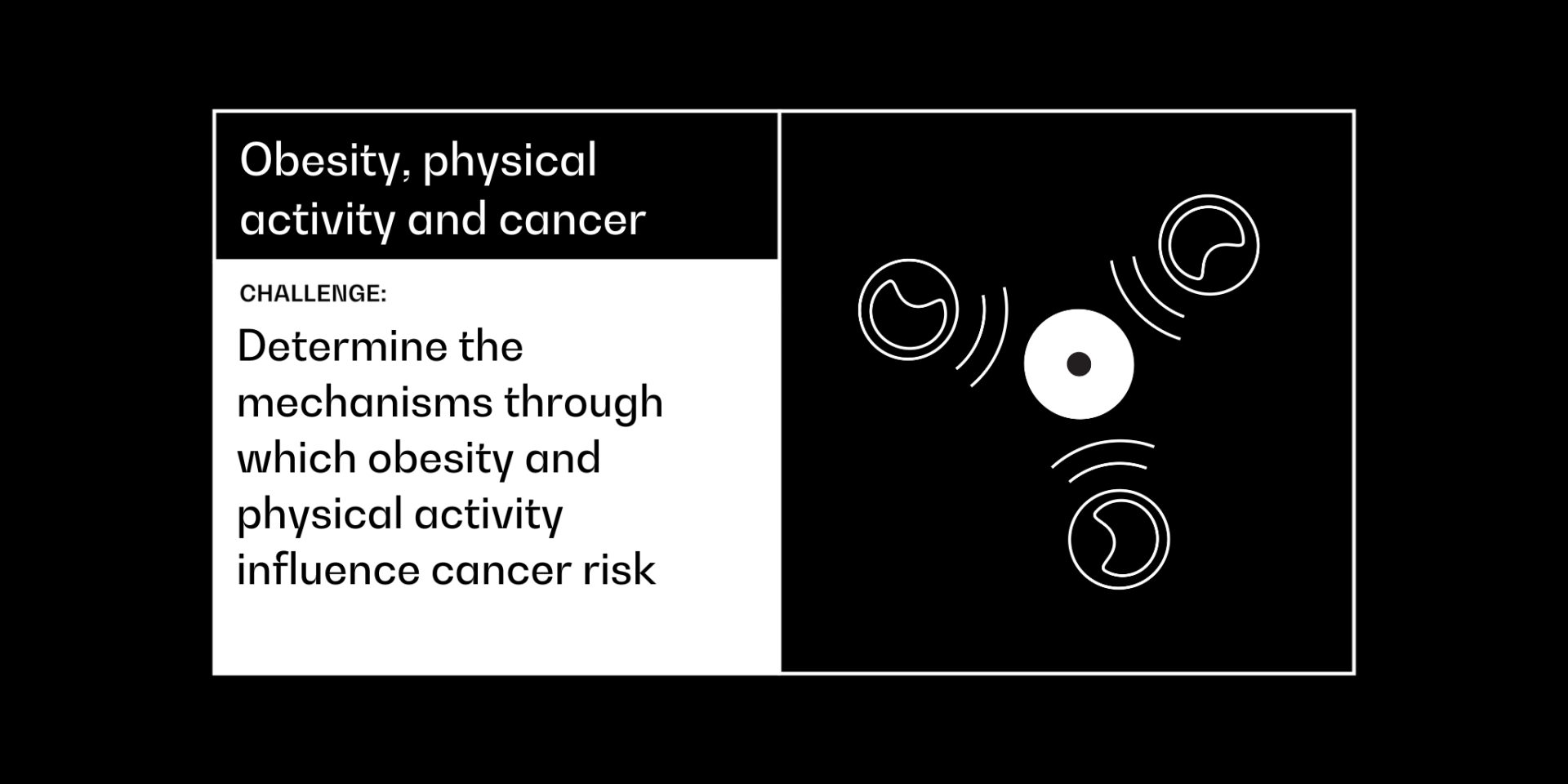
Obesity, physical activity and cancer
Challenge: Determine the mechanisms through which obesity and physical activity influence cancer risk
This was a challenge in an earlier round, we are not currently accepting applications for this challenge.
Context
Obesity and sedentary behaviour are important risk factors for cancer. With over 4 billion adults and nearly 3 million children being overweight or obese, this is a significant global health concern. Previous studies and large meta-analyses have provided convincing evidence that obesity is associated with an increased risk of 13 cancers, and physical activity is associated with reduced risk for 6 different cancer sites. Yet, despite decades of research, the causative mechanisms linking obesity to cancer development and progression are not understood.
The challenge is timely due to recent advances in measurement, data science and emerging artificial intelligence (AI) methodologies, the availability of effective new drugs to treat obesity, experimental policy interventions around the world and new tools from basic science. Together, these provide the foundation for a new era of discovery research to understand the mechanistic links between obesity and cancer that could be translated into effective interventions.
Barriers and opportunities
Much is known about the impact of obesity and physical activity on cancer, but the causative biological mechanisms are not understood. This has hindered the development of effective interventions.
Recent advances in high-throughput assays to measure biological features, e.g., the genome, methylome, metabolome, transcriptome, microbiome, and proteome, together with the creation of large research consortia and population biobanks, have vastly expanded the availability of high-dimensional molecular datasets from human samples, many of which are accessible through a range of bioinformatic platforms.
This challenge aims to go beyond collection of “omics” datasets, to seek a mechanistic understanding of the processes underlying cancer risk, causation and progression mediated by obesity.
The challenge seeks to answer questions such as, but not limited to:
- How do obesity and physical activity influence cancer at the molecular level?
- Does weight loss impact or can it reverse cancer risk, if so, what is the biological mechanism(s) involved?
- Does age of weight gain/loss affect risk and if so, what are the mechanisms?
- Does fitness reduce cancer risk among those with higher BMIs and, if so, how?
- How do new anti-obesity medications and gastric banding influence cancer risk?
- What is the dose-response relationship between physical activity and cancer?
- What can be done to reduce inequities in risk factors?
Vision and Impact
This challenge seeks to build on the observed association between obesity and sedentary behaviour and cancer risk and to understand causative mechanisms to inform interventions to alter risk.
New measurement tools and methods, including improved biomarkers of risk, are needed. Success will likely require collaborations among basic, clinical, population scientists and others (e.g., engineers, policy experts). Animal models, data science, AI and other tools could advance discovery and help to identify interventions that can be translated into humans. The challenge is not aimed at testing alternative weight loss diets. Pilot tests of interventions could be derived from discoveries about mechanisms.
Understanding the effects of obesity and physical activity on cancer will accelerate development of interventions to reduce global cancer incidence and mortality and prolong survival. This will have population impact worldwide.
Plain language summary: Why obesity, physical activity and cancer?
Over the past 30 years, increasing evidence has shown that physical activity and obesity influence cancer risk. Physical activity is associated with decreased risk of developing six types of cancer and obesity is associated with increased risk of developing 13 types of cancer.
Although the effects of obesity and physical activity on cancer are widely known, the specific biological processes by which they act through to influence an individual’s risk of developing cancer are unclear.
This challenge seeks to gain a better understanding of how obesity and physical activity influence cancer risk at the biological level. In the future, this knowledge could allow strategies to be developed to decrease global cancer incidence.
You can find the plain language summaries for each of our nine new challenges here.